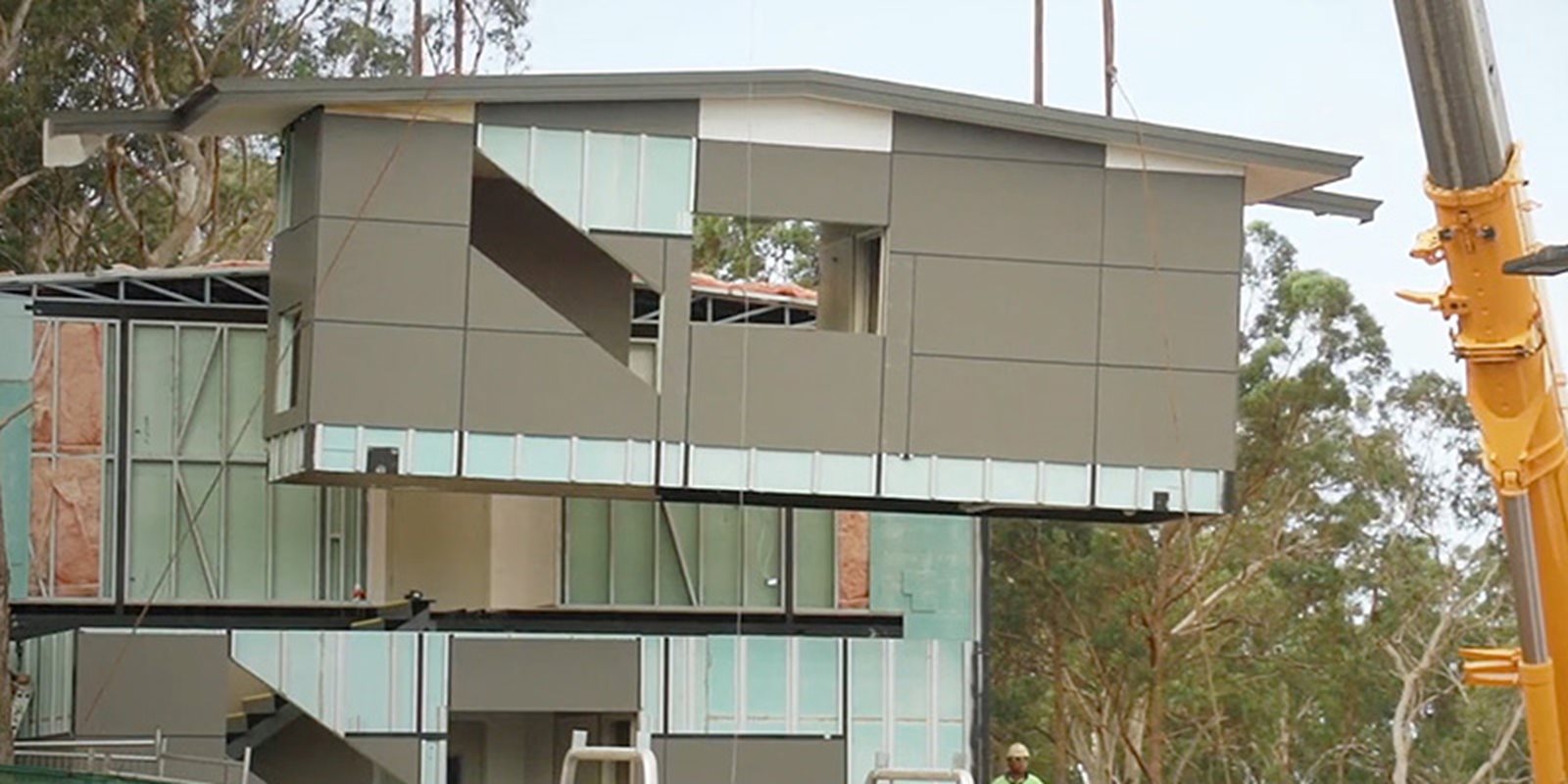

Modular construction can generally be described as any form of construction where some form of prefabricated component or module is brought to site pre-assembled and erected into the final structural form.
The intent of modular construction is to maximise high-quality off-site manufacturing and minimise on-site building activity and use of trades, hence also minimising the amount of labour on-site and its attendant workplace health and safety risks.
In this context, structural steel has utilised prefabrication for many years. In recent years, however, modular construction has has come to be associated with the concept of ‘volumetric modular’. This describes prefabrication taken to the extent of manufacturing complete three dimensional work or living spaces off-site, which are then brought to site complete with main structure, internal finishing and all internal services complete.
These volumetric units may be stacked beside and on top of one other and connected together to form a fully functioning building. The modular units are generally self-supporting and may be able to be stacked up to multiple levels. For larger or higher structures, the imposed dead, live and environmental loads may be resisted by either a supplementary or primary structural system comprising conventional steel framing, creating a building structure that may function structurally in a hybrid manner, sharing load between the modules and additional steel framin
.jpg?variant=HalfWidth)

A module can be constructed from a range of different building material but, in practice, steel is the material of choice. This is particularly the case for the main structural framing and system, which can take advantage of the inherent lightness, strength, ductility and robustness of steel material and structural steel framing to withstand raking loads during transport.
There are many forms of modular systems on the market, a number of which are proprietary (typically in respect to connection details between modules).
There are a number of different types of modules to service different functions within a completed building structure:
Hybrid modules that may rely on other elements to resist some or all of the imposed structural actions.
Modular construction capitalises on the inherent properties of steel to provide a number of key advantages relative to conventional construction:
Innovation is current and ongoing in the relatively young area of modular construction in Australia. There are a number of focus areas for innovation, including:
.jpeg?variant=HalfWidth)